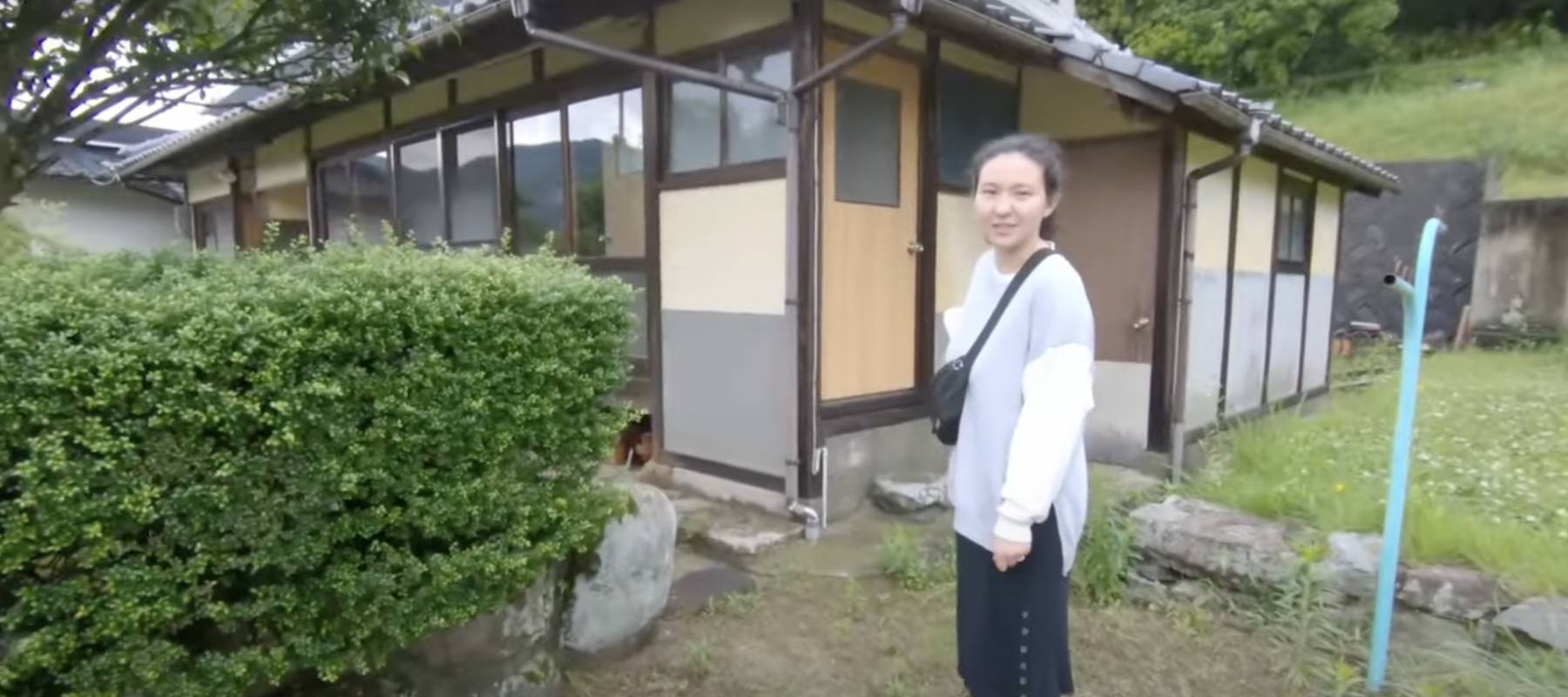
How to invest in art
Beach Creatives / Shutterstock
Updated: February 12, 2024
We adhere to strict standards of editorial integrity to help you make decisions with confidence. Please be aware that some (or all) products and services linked in this article are from our sponsors.
We adhere to strict standards of editorial integrity to help you make decisions with confidence. Please be aware that some (or all) products and services linked in this article are from our sponsors.
Investing in art isn’t a straightforward business. For an outsider looking in, it can be hard to decide where your money should go.
For example, a seemingly simple painting with bands of green, crimson and lavender — from world-renowned abstract expressionist Mark Rothko — recently sold for $82.5 million.
Meanwhile, bizarre art pieces, such as a banana duct-taped to a wall, can sell for $150,000 (there were no instructions given on what to do when the banana starts to spoil).
Economic factors such as inflation and the crypto crash have dampened art sales, but 2022 still saw record-breaking auctions, especially as some of the world’s richest got richer and looked to diversify their investment portfolios.
Thankfully, you don't need to be an art expert or have a multimillion-dollar budget to join the likes of Bill Gates and Jay-Z by investing in the art world. Here's what you need to know.
Ways to invest in art
Stock market
Unlike assets such as gold, the art market is not highly correlated with stocks or bonds. There is a stock-market-like index called the Artprice100 — like the S&P 500 but for the art world — that was launched in 2018.
The Artprice100 lists the 100 top performing artists at auction within the last five years. The index also includes data such as the piece's initial weight and its time period. The list is released every Jan. 1 and can be a good place to start if you are dipping your toes into the fine art world.
Besides that index, the only way to know what’s being traded is from auction data. The limitation on this index is that there is no data if a piece of art never sells. This can affect prices of art pieces that aren’t auctioned.
If you are inspired by the Artprice100 index, but don't have a cool $2 million to invest in a Picasso print, there are some other options.
Art as investment
Fractional art investing
In the past few years, art has becoming increasingly accessible. One of the newest trends is fractional art investing, which is provided by companies such as Masterworks.
Just like buying shares in a company, you can do that for a piece of art. Instead of potentially paying millions, you can pay a fraction of the cost and still become a co-owner of a masterpiece.
With this process, artwork owners work with a fractional investing company to divide their work's value into shares, which can be purhcased by investors. When investors purchase a share, the transaction is then filed with the U.S. Securities and Exchange Commission.
Masterpieces come with a lot of responsibility. Art requires special storage to prevent damage and theft. It also requires an esteemed authority to vet its authenticity. As an investor, you don’t have to worry about these details since the company selling the piece takes care of them.
Art worth investing in
With any investment, there is a risk, especially for rookies.
First of all, there are going to be trends. The connoisseurs are better equipped to recognize which ones are fleeting or staying.
New York gallery owner Georges Berges recommends keeping an eye on artists who are represented by a gallery. According to Berges a good indicator of an artist’s standing is whether their work has been purchased by a museum or an esteemed private collection. This could help stabilize the price of their work.
For all the novices and art investor hopefuls, the No. 1 advice is to attend as many exhibitions as possible. Curators also recommend jumping into your local art scene and getting to know artists. Visiting museums and galleries can be a great way to do your own research and discover the names and styles that are drawing attention.
Once you have identified works that you like, you need to think about the finances of investing. It is highly inadvisable to put all your money in one investment target.
Depending on how much you can afford, make a budget of less than $5,000 for work by an up-and-coming artist represented by a reputable gallery.
Advantages of investing in art
While the stock market has seen ups and downs, the art market has seen consistent growth during the pandemic.
For fine art, there was a 64% increase in single-owner sales value in 2022, according to an ArtTactic report. The total value of single-owner sales was almost $4 billion.
Fine art can boast impressive returns, though nothing is guaranteed, and returns can differ greatly depending on the style of art and the individual piece.
In 2009, a study based on data from over 1.2 million auction house sales of paintings, drawings and prints showed real returns (after accounting for taxes and inflation) were 4% per year from 1951 to 2007.
However, real returns from 2002 to 2007 were 11.6% higher than the return on bonds for the same period.
As an alternative asset, fine art may also be less correlated to the stock market than more traditional assets. This can be appealing for investors who want more protection from instability.
Best platforms to invest in art
These days, there is no shortage of online investing platforms for assets — from stocks to real estate, to robo investing and cryptocurrency. Technology has also made it easy to invest in art, thanks to the number of online art investing platforms. Below are a few of the best platforms to invest in art, some of their pros and cons, and features to help you decide which is best for you.
Masterworks
Masterworks is one of the leading art investment platforms. Rather than investing directly in art, Masterworks allows you to invest in securitized blue-chip paintings. When you make an investment in Masterworks, you aren’t buying an entire piece of art. Instead, you’re buying a piece of ownership of a piece of art. As a result, you can easily build a diversified art portfolio for less money than the price of a single piece of art.
Once you’ve made your investment, you have two choices. You can either sell off your share of the piece. Or you can wait three to 10 years until Masterworks sells the piece, and each of the owners gets a pro-rata share of the proceeds. Keep in mind that liquidity on these investments may be lower than you’re used to, which will affect your ability to sell.
Masterworks is best for investors who want to gain art exposure to their portfolio, but without actually owning and maintaining pieces of art. It comes with plenty of benefits, including low investment minimums, an easy-to-use platform and solid historical returns. You can find out more in our Masterworks review.
See important information here
Pros and cons of Masterworks
Pros
-
Low investment minimums in high-priced art pieces
-
Easy-to-use platform
-
Historical returns higher than the S&P 500
-
Available to non-accredited investors
Cons
-
Low liquidity, since Masterworks doesn’t sell the art for three to 10 years
-
1.5% annual management fee and 20% commission
-
Phone screening required before you can start investing
Yieldstreet
Yieldstreet is an alternative investment platform that allows investors to gain exposure to a variety of private markets that have previously only been available to institutional and high net worth investors. One of the investments available on Yieldstreet is art.
To invest in art through Yieldstreet, you can choose from six funds focused on fine art investments. Investors can get started with $10,000 and choose from a diversified pool of blue-chip, mid-career and emerging artists.
When you invest in art through Yieldstreet, you aren’t actually buying an individual piece of art. Instead, you’re investing in portfolios of backed loans and fractionalized shares of art. Depending on the offering you choose, you may get regular interest payments with principal repayment when the loan matures.
With the exception of one of Yieldstreet’s funds, keep in mind that the platform’s investments are only available to accredited investors — meaning those with an income of at least $200,000 (or at least $300,000 for a married couple), or a net worth of $1 million. You can learn more about the platform in our Yieldstreet review.
Pros and cons of Yieldstreet
Pros
-
Large variety of alternative asset offerings
-
Easy-to-use platform
-
Historical returns higher than the S&P 500
Cons
-
High investment minimums
-
Many investments are only for accredited investors
Otis
Otis is an online investing platform that democratizes access to alternative investments that have previously only been available to wealthy investors. It was created due to the founder’s passion for art and culture, and the belief that investing in cultural objects can be a part of any diversified investment portfolio.
With Otis, you can invest in many different types of alternative investments, including collectibles, art, non-fungible tokens (NFTs), sneakers, and more. Rather than directly purchasing the assets on Otis, you’re actually buying securitized versions of the assets that have been broken into many shares. You own just one piece of each asset, along with other investors. You can trade in real-time just as you would with stocks, and easily check in on your investments from the app.
There are two different ways you can make money on Otis. First, you can trade your shares to the different securitized assets. Second, Otis occasionally receives buyout offers for its assets. In that case, shareholders can vote on the offer, and each shareholder will get a pro-rata share of the proceeds. The good news is that Otis investments are available to both accredited and non-accredited investors.
Pros and cons of Otis
Pros
-
Available to non-accredited investors
-
Low investment minimums for high-priced investments
-
Make money either through trading or through buyout offers
-
Offers more than just traditional art, including sneakers and NFTs
Cons
-
Fees include 0-10% sourcing fee and 1% broker-dealer fee
-
Potentially low liquidity
-
Limited information available on investment returns
Other ways to invest in art
Online platforms like Masterworks, Yieldstreet, and Otis have made it easier for the average investor to add art to their investment portfolio. However, these aren’t the only tactics available. Here are a few other ways to invest in art:
Art funds
Some investments are easy to purchase through a mutual fund or exchange-traded fund (ETF). These pooled investments allow you to own a part of many different assets, all through one investment. While there are no mutual funds or ETFs available for art, there are other art investment funds that allow you to gain exposure to this alternative asset.
When you participate in an art fund, you own a fractional portion of many different pieces of art. You don’t actually take control of the art, meaning you aren’t responsible for maintaining it or finding a buyer when the time comes. While these funds are small in number today, they may increase as securitized art investments become more popular.
Art indices
An art index tracks the sales and performance of various popular art pieces, similar to how an index fund tracks the performance of a particular stock index. And just as you can invest in stock index funds, it’s possible to invest in art indices that track these well-known art pieces.
It’s important to keep in mind, however, that art indices don’t work exactly like stock indices. After all, famous works of art don’t sell every day. And because the index only tracks the price when a piece of art sells, it can be inaccurate. After all, some investors hold onto pieces of art for years and even pass them down to heirs. You can see why this would make the numbers in these indices outdated.
Art galleries and auctions
Traditionally, art was purchased through galleries and auctions. And while there are now many online platforms to invest in art, the traditional route still works.
First, you can look for brick-and-mortar galleries in your area. Not only can you shop the items for sale at the gallery, but they may also offer services including tracking down specific pieces of art you’re interested in. It's a great way to support a local business and help jumpstart a new artist’s career, while also adding some well-known pieces to your portfolio.
Another way to shop is through online galleries and auction houses. These websites make it easy for anyone to buy and sell art. You can visit the website and search through hundreds of pieces available from other individual investors. When you’re ready to sell, these platforms also help to facilitate the deal (likely for a commission).
Keep in mind that buying art through a gallery or auction — especially when you’re talking about high-priced art — requires special knowledge of the industry. You wouldn’t want to spend hundreds of thousands of dollars on a piece without knowing exactly what you’re getting yourself into. Owning art also requires maintenance, which most investors aren’t interested in or used to.
For that reason, investors who want to add art exposure to their portfolios (without the research it takes to become well-versed in art) will likely prefer securitized investments and art indices, which take much of the guesswork and maintenance out of it.
Another downside of purchasing actual art pieces through a gallery or auction is the lack of liquidity. After all, selling an expensive painting is hardly the same as selling a stock. While one can be done online in just a few minutes, the other requires more planning, more effort, and potentially weeks (or months) or time.
Tax advantages of owning art
When buying art for yourself to enjoy, it is treated as a personal purchase and it isn’t taxable. However, when selling art or other collectibles for profit, you will be subject to capital gains taxes.
Donating art to charity, however, can give you some tax deductions.
Let's say you sell art that you have owned for more than one year, and then pay its capital gains taxes. If you donate the cash proceeds, you may be able to deduct up to 60% of your adjusted gross income (AGI).
Art financing is yet another burgeoning trend. It’s when people borrow against the value of the artwork, which allows them to receive a lot of cash without needing to sell. This allows you to realize the value of their investment, with no capital gains taxes.
Reputable dealers only
Forgeries are a real concern. Even reputable galleries can be scammed and end up selling fake pieces. In 2014, Sotheby’s auction house sued Knoedler & Co. – once one of New York City’s most prestigious art dealers – after paying $8.3 million for a fake Rothko painting.
However, working with reputable galleries will reduce your chances of being duped since they can verify the origin and authenticity of the painting you are interested in — most of the time.
If you become a regular at a reputable gallery you can also get access to high-quality, limited-edition prints of originals. These can have a lasting value. In 2012, one of the first prints ever made for Pablo Picasso’s "The Frugal Repast" sold for more than $2 million.
Be aware that not all “prints” are reproductions of famous works. Some art exists only as prints, while the pieces that are copies of famous works may be called “reproductions.”
These reproductions are the ones that are truly “limited-edition prints,” since they are usually produced in a series called editions. The editions can range anywhere from a handful of prints, to several thousand. The smaller the edition, the higher the price. If the print is also signed by the artist, the price can be two or three times higher than an unsigned one.
Once you have built experience and are feeling confident, you can graduate to what’s known in the industry as blue-chip artists.
Blue-chip artists are art masters whose works have had consistent years of sales that have been confirmed at auction. Their most famous work will typically cost anywhere from $100,000 to tens of millions of dollars.
Crypto art is a thing now
Aside from physical paintings, digital art is another area that has seen rapid growth in the past few years.
Online art sales were growing before the pandemic, but COVID-19 pushed this trend forward. In addition, there is a the newer trend of digital art, especially non-fungible tokens. NFTs are "minted" with blockchain technology; the technology that records crypto transactions. The technology can then confirm the art's authenticity and uniqueness. This process gives crypto art its value, since it can’t be copied.
MORE: Fine art investing trends to watch for
New opportunities, new risks with digital art investments
Some critics have raised the alarm about the digital art scene, arguing it is becoming a hotbed of market manipulation. There have been allegations of wash trading, where a single trader sells and buys an asset in order to increase its value.
For better or worse, the crypto art trend is no longer booming, compared to 2022. Most of 2022's sales occured between January to May, with the average starting price falling from $429,000 in April to less than $60,000 in November. Additionally, there was over $1 billion in sales of a specific NFT — Bored Ape — in 2022.
The crypto crash has also led to less consumer confidence in NFTs, with 20% of respondents saying they were "open minded until the crypto crash." However, 34% still believe the NFT market still has "a lot of potential."
Lingering potential
Despite a recent slump, NFTs are still a pretty popular investment. Collectors have spent over $73.8 on NFTs as of May 1, 2023.
NFTs have also been auctioned off.
One example is when Beeple, a U.S. graphic designer and animator whose real name is Mike Winkelmann, sold an NFT collage of his images titled "Everydays: The First 5,000 Days" for nearly $70 million at Christie's auction house in 2021. Vignesh Sundaresan, known to the cryptocurrency community as MetaKovan, was the buyer.
Months before the auction, MetaKovan bought other works by Beeple, divided ownership of them into blockchain-based “tokens,” and sold those to the public.
Disclaimer
The content provided on Moneywise is information to help users become financially literate. It is neither tax nor legal advice, is not intended to be relied upon as a forecast, research or investment advice, and is not a recommendation, offer or solicitation to buy or sell any securities or to adopt any investment strategy. Tax, investment and all other decisions should be made, as appropriate, only with guidance from a qualified professional. We make no representation or warranty of any kind, either express or implied, with respect to the data provided, the timeliness thereof, the results to be obtained by the use thereof or any other matter.





